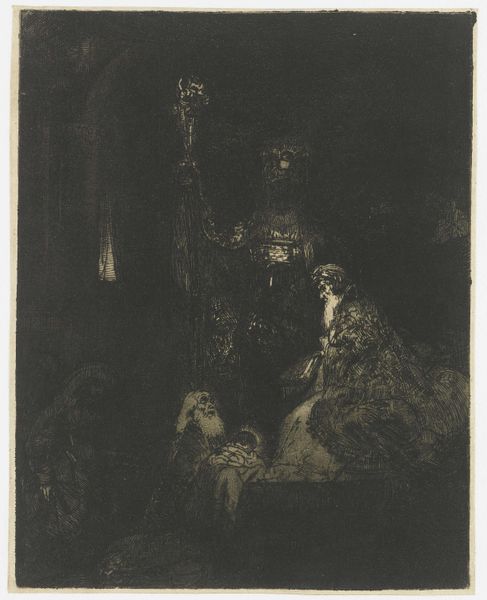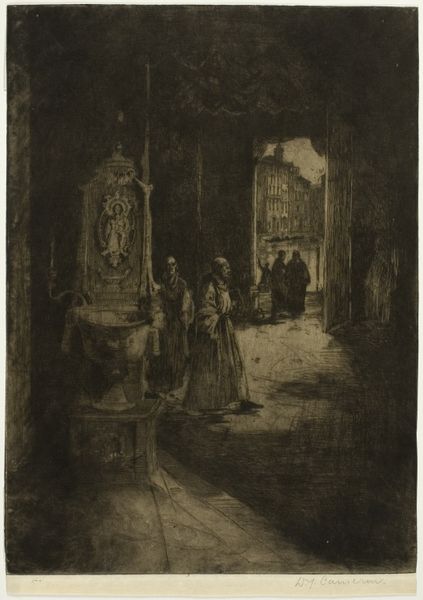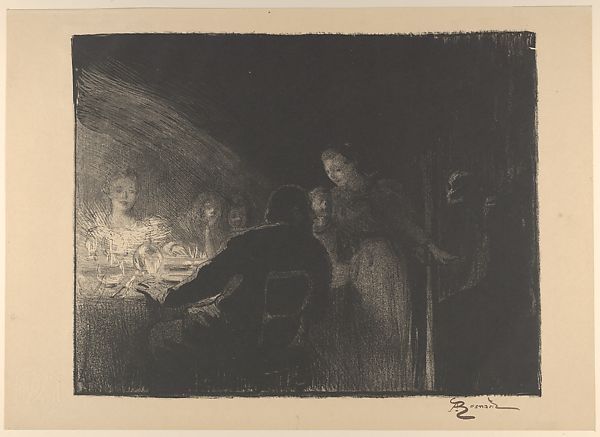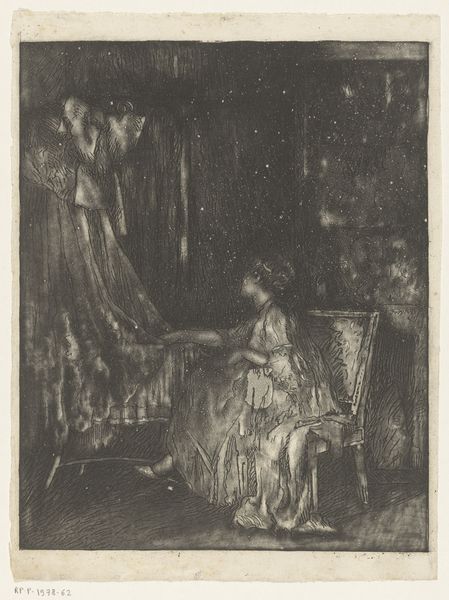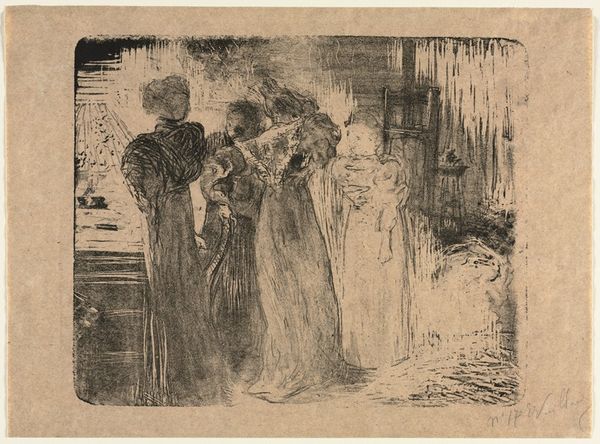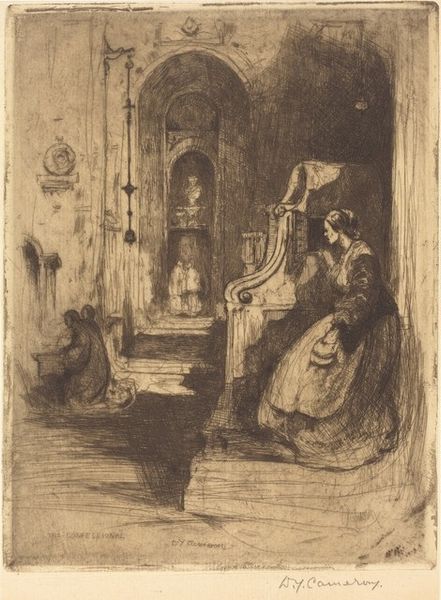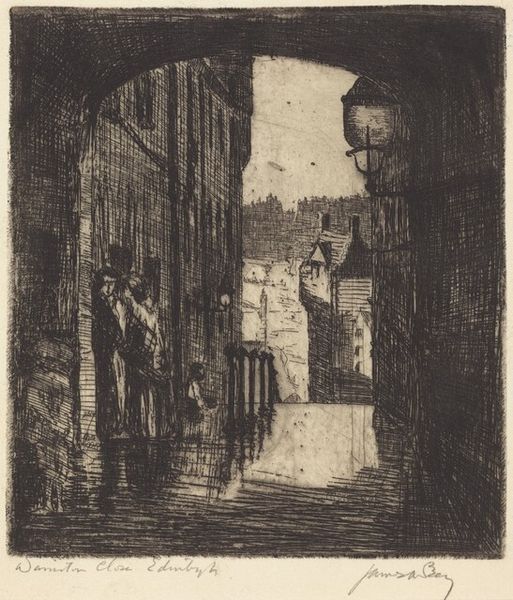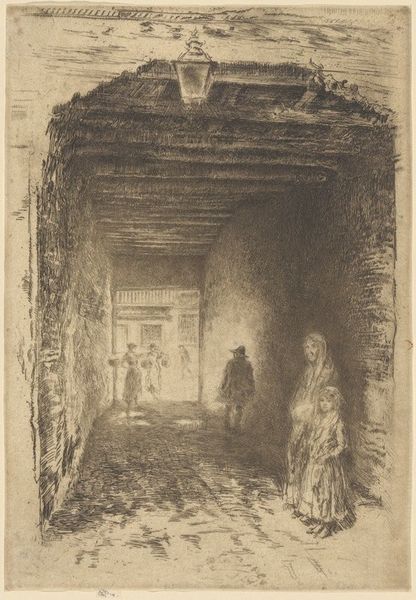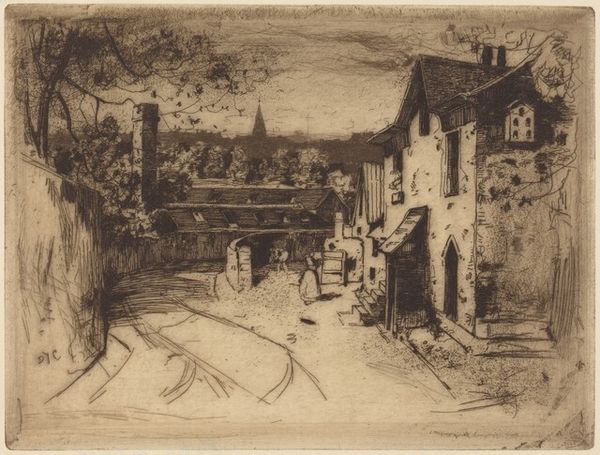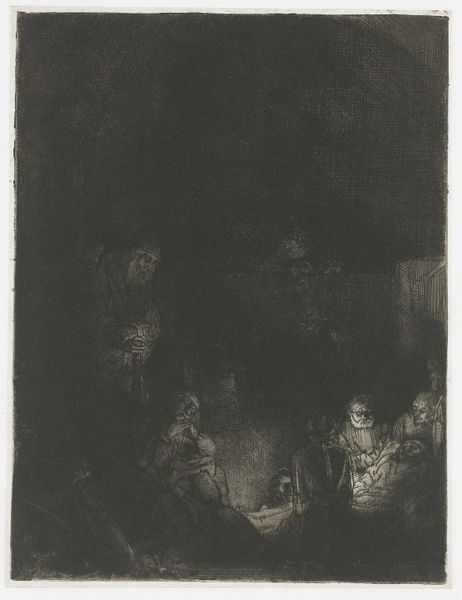
Copyright: National Gallery of Art: CC0 1.0
Curator: Let’s turn our attention to David Young Cameron's 1896 intaglio print, "The Wine Farm." There’s an evocative interior depicted here, printed in a rich sepia tone. Editor: My first impression is one of intimate confinement. The space feels dim and dense, even claustrophobic, yet populated with bodies that hint at larger societal implications. Curator: Cameron was celebrated for his masterful control of the etching process. Look at how he manipulates light and shadow to create atmosphere. It’s essentially layers of line, aren't they? Varying the pressure on the plate allowed Cameron to evoke tonal subtleties and suggest forms without fully delineating them. Editor: Absolutely. The figures are partially obscured, creating a sense of anonymity that speaks volumes. It's not simply a snapshot of laborers in a "wine farm," but rather a subtle commentary on the labor itself – how they’re presented, situated inside the production itself, and its historical dimensions. It feels… heavy. Curator: We should also consider the context in which Cameron was creating these prints. At the turn of the century, there was an Arts and Crafts movement revival and re-valuing of handmade prints. There was a challenge of traditional artistic hierarchies where printmaking became much more important as a craft. It moved beyond mere reproductive work, to have artistry. Editor: And I think that challenge underscores his approach, pushing against traditional, exclusionary narratives. The artist subtly inserts women at multiple points inside the picture, emphasizing, perhaps, their overlooked contribution. It encourages the viewer to question whose stories are historically visible and whose are deliberately kept in shadow. Curator: That focus on shadow makes it technically interesting to think about what happens with light, the ways that this process of etching and intaglio is also so much about contrast – about carving into the darkness with intentional strikes. Editor: "The Wine Farm" certainly demonstrates how artwork from the past offers important perspectives for present discussions concerning equality, identity, and fair economic opportunities, providing spaces where art history interacts meaningfully with contemporary challenges. Curator: Indeed, considering it that way provides fresh eyes when experiencing his command over material. He wields the material to evoke the atmospheric, to draw the viewer into a dark, but vital interior.
Comments
No comments
Be the first to comment and join the conversation on the ultimate creative platform.

